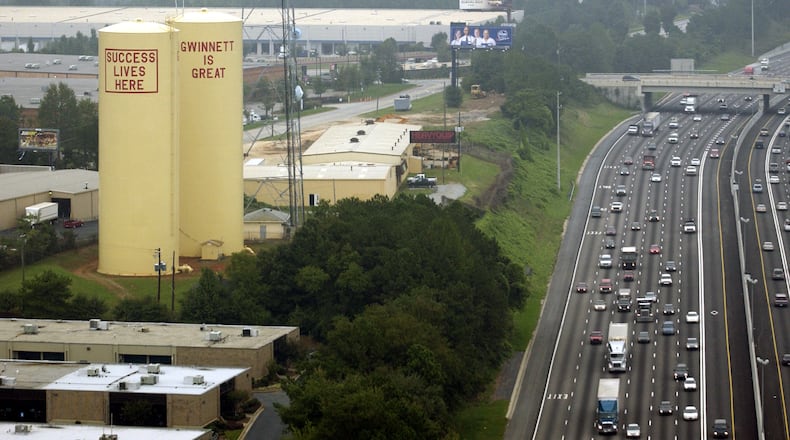Welcome, AJC reader, to the very first installment of "Actual Factual Gwinnett." In what will become a regular column, I – Tyler Estep, a Gwinnett native – will (attempt to) entertain you while providing answers to your most burning questions: What are they building on So-and-So Street? Whatever happened to That Thing We All Cared About At One Point? Why is The Cheesecake Factory at the Mall of Georgia always so dang crowded?
The goal is to hear directly from you. Moving forward, you can holler at me at tyler.estep@coxinc.com, or on Twitter at @ByTylerEstep, with anything you want to know. There's also a submission form below. But until we get up and rolling, I’ll answer a question or two of my own. I’ll try to make them interesting. Promise. Let's go.
Dear Tyler: So what, exactly, happened to the "Gwinnett Is Great" and "Success Lives Here" water towers? And when? And why?
--Sincerely, Tyler
Great question, Tyler, and funny you ask! I was just thinking about this the other day!
For the unfamiliar: Back in the day (1968 and 1972, to be exact), Gwinnett built a pair of 140-foot water towers overlooking I-85 near Jimmy Carter Boulevard. They held two million gallons of water, true – but they became better known as the county's big yellow welcoming committee. "GWINNETT IS GREAT," one said. "SUCCESS LIVES HERE," declared the other.
They were ugly but beloved, a fixture on drives to and from The Big City and Gwinnett's only real landmark. Local historian and journalist Elliot Brack once aptly described them like this: "Water towers aren't beautiful, but you sort of knew you were home when you saw that."
Now to answer the question: Time caught up to the towers. What wound up being their final paint job cost the county $183,000 and – even after water system improvements made them obsolete -- annual operating costs ran north of $100K, too.
In March 2010, Gwinnett commissioners decided to scrap the towers. Like, literally scrap them.
By the end of August 2010, crews from Tristar of America, Inc. began picking the towers apart, cutting them into small pieces before they were shipped to a scrap yard, shredded and melted down for recycling -- for the most part anyway. Nick Masino, a senior VP at the Gwinnett Chamber, just recently tweeted a photo showing a remnant of one tower:
When the towers were gone, children wept, commuters lowered their moonroofs in respect, and thousands marched upon the Gwinnett County Justice and Administration Center. OK, not so much. It was actually pretty anticlimactic, and the plots remain empty today.
And there you have it. Your (our) very first "Actual Factual Gwinnett” column. Where we go from here is up to you. Unless your suggestions are very boring. Then I'll be forced to continue conversing with himself.
And no one wants that.
About the Author
The Latest
Featured

